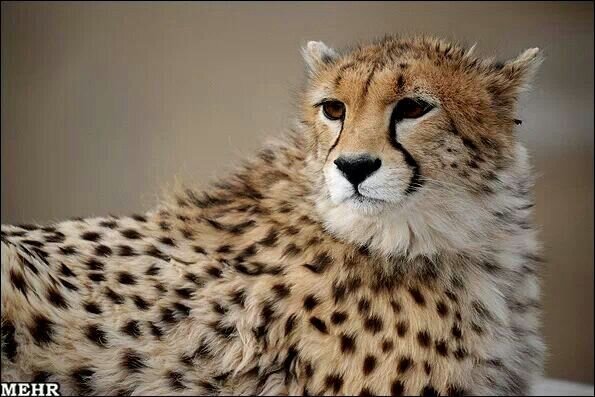Asiatic cheetahs in Pardisan Park to undergo semi-captive breeding

TEHRAN – Two Asiatic cheetahs, kept in captivity at Tehran’s Pardisan Park, will be transferred to protected areas of central Yazd province for semi-captive breeding, Kiumars Kalantari, deputy chief of the Department of Environment (DOE), has said.
“Breeding of endangered species is one the main goals of the department, however, after the artificial insemination failure on female Asiatic cheetah, we will practice semi-captive breeding,” he stated.
“We decided to send Asiatic cheetahs to Yazd province as a pilot project, in case of success, other provinces also will undergo researches to determine the climate characteristic for cheetah reproduction,” he explained.
He went on to say that the project of transferring the endangered species from Pardisan Park to Yazd protected areas is in the preliminary phase, YJC reported on Sunday.
Persian cheetah population seems to be in trouble
Female Asiatic cheetah, Delbar, and the male one, Kushki are living in the capital for past few years.
In 2015, the female Asiatic cheetah once became pregnant naturally but sadly lost her cub.
Last year (March 2018-March 2019), Delbar was physically prepared for mating with Kushki (the male Asiatic cheetah in captivity), however, possibly due to Kushki’s old age, the two didn’t breed.
Delbar underwent artificial insemination earlier this year (starting on March 21), which turned out unsuccessful.
Natural mating has been already tried for Asiatic cheetahs kept in captivity, which sadly failed. Now, artificial insemination is considered to be the major option for fertilize the female Asiatic cheetah, nonetheless, the chance of pregnancy and survival of the cubs is extremely low.
This is while, Alireza Jourabchian, Conservation of the Asiatic Cheetah Project founder, told Tasnim that unfortunately, mismanagement severely affected conservation projects.
Asiatic cheetah born in captivity will never learn the skills to survive in nature and will not be able to reproduce in nature, thus a captive breeding plan cannot be considered as a measure to prevent the extinction of the cheetahs, he lamented.
The world's fastest mammal, capable of reaching speeds of 120 kilometers per hour, once stalked habitats from the eastern reaches of India to the Atlantic coast of Senegal, once their numbers have stabilized in parts of southern Africa, but they have practically disappeared from northern Africa and Asia.
The subspecies "Acinonyx jubatus venaticus", commonly known as the Asiatic cheetah, is critically endangered, according to the International Union for Conservation of Nature, with fewer than 50 believed to remain in Iran.
Roads fragmenting cheetahs’ habitats are the main threats for the species, while guard dogs and stray dogs, drought spells, decreasing population of the prey species to support the cheetahs, and habitat loss are also other factors endangering the sparse population of the cheetahs in the country.
Majid Kharrazian-Moqaddam, director of aquatic wildlife and biodiversity office at the Department of Environment, said in August 2018 that over the past 16 years, some 42 Asiatic cheetahs have been killed in the country.
In spite of ongoing conservation efforts, the species’ population has been shrinking during the past years.
FB/MG
Leave a Comment